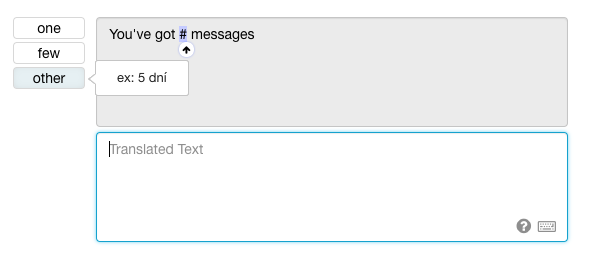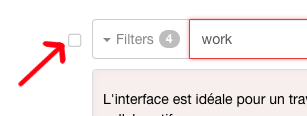3 min. read
Improved Plural Forms Management and Examples
At Translation.io, we systematically implement the latest Unicode standards for the rules governing plurals. These rules are applied in our translation interface, and where possible, in the files sent back into your application.
You may already be aware that each language has a set number of plural forms, ranging from 1 for Chinese to 6 for Arabic.
There are clear rules, based on quantity, governing the plural form which will apply in a given context.
Here is an example of two languages with the same number of plural forms but to which different rules apply according to the quantity.
Plural forms of English
- 0 emails (
otherplural form). - 1 email (
oneplural form). - 2 emails (
otherplural form).
Plural forms of French
- 0 e-mail (
oneplural form). - 1 e-mail (
oneplural form ). - 2 e-mails (
otherplural form).
You can see that for a quantity of 0, in English it is the form other
that applies, while in French it is the form one.
When faced with an increasing number of plural forms, this can soon become quite complicated to manage. This is why we automatically show your translators the correct number of plural forms to translate in their interface according to the target language selected.
In this example, Czech uses 3 plural forms: one, few and other.

And as the names given by the Unicode standard to the plural forms can be ambiguous, we have added a concrete example of each form in the translator’s language.
Small improvements like this can make a big difference, by eliminating plural errors which can be difficult to detect and correct within your application.
You can find all the rules governing plurals as applied by Translation.io, together with the suggested examples, on this List of Languages and their Plural Cases.



